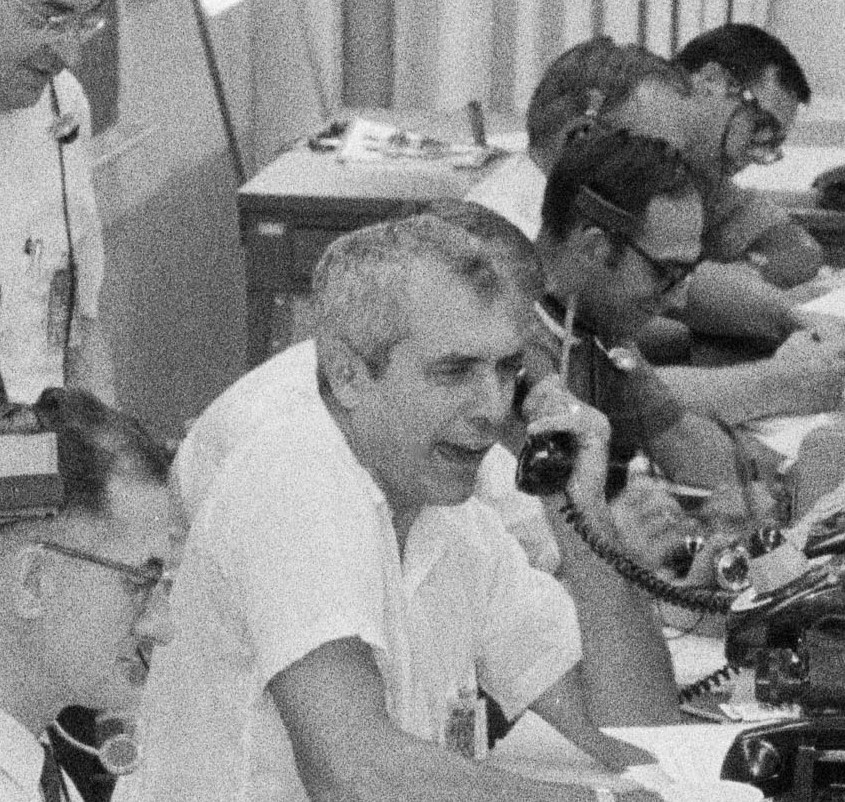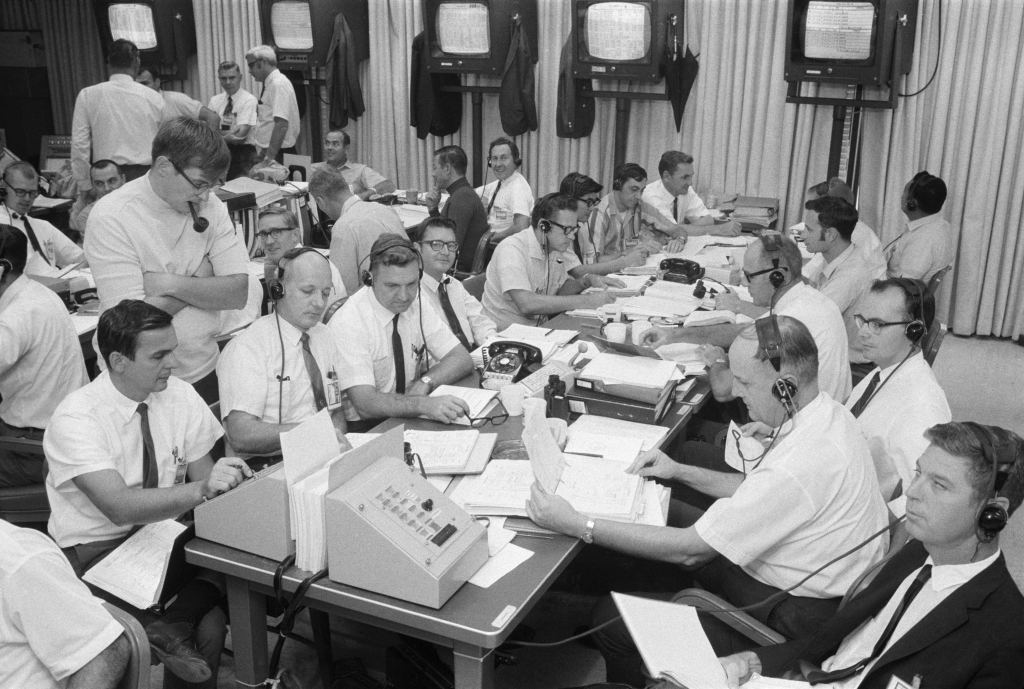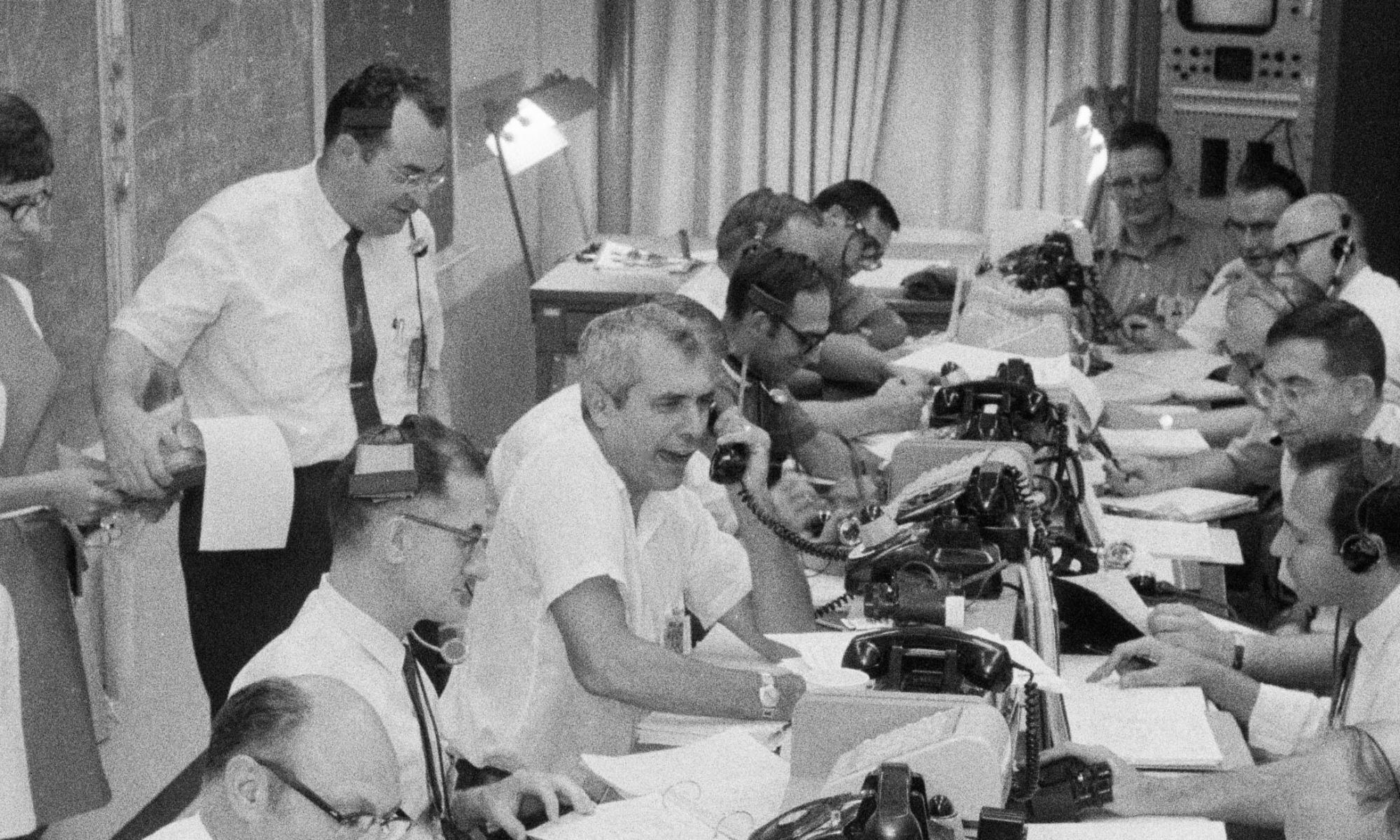One of the truly unsung heroes of the Apollo program has passed away at age 95. Donald D. Arabian, Chief of the Apollo Test Division, headed the Mission Evaluation Room (MER), which was responsible for solving in-flight problems during the Apollo missions to the Moon.
His nickname was “Mad Don,” and anyone who had the privilege of meeting him or working with him described Arabian as “one of a kind,” “colorful,” and “completely and totally unforgettable.” But in the book “Apollo: Race to the Moon” authors Charles Murray and Catherine Bly Cox designated Arabian as one of four people responsible for the success of the Apollo Program.
Those who worked with him during the Apollo days recall most vividly that Arabian’s main mode of communication was yelling. He would shout, swear, holler; whatever it took to get an immediate answer to his questions and demands. But he was a brilliant engineer, with a quick and intuitive mind and an ingenious knack for assessing spacecraft anomalies.

“His mind operated so fast, he couldn’t get the words out fast enough,” Apollo flight director Gerry Griffin told me during an interview in 2018. “The faster he talked the louder he got. But everyone knew to listen because Arabian was always right.”
“Don was unforgettable and charismatic. His booming voice was just under the decibel level of the threshold of pain,” recalled Apollo engineer Jerry Woodfill, who led the Caution and Warning System on the Apollo spacecraft. “He could blast across the MER so that an engineer farthest from him could easily hear his pronouncements, commands and questions.”
Craig Scott, a space enthusiast from Wales, interviewed Arabian several times, and has posted some of their interactions on You Tube.
“Whenever I spoke to him about his age in ‘years’, he would say “I prefer the term ‘orbits around the Sun,” Scott said via an email to Universe Today. “He was just on a different plane of thinking to anyone else. I once spoke to his sister who, at the time, lived in Austria. The demand for clarity (obedience, even?) clearly ran through the Arabian genes because she asked me if I understood something that she had explained to me and I replied with “I think so,” to which she bellowed “Whaddaya mean you think so, either you do or you don’t!'”
Arabian originally joined NASA’s founding organization, NACA (The National Advisory Committee for Aeronautics) in the early 1950’s. He worked on all the major U.S. human space programs from Mercury through Apollo, and led the Apollo Spacecraft Program Office (1968-1973), and later was Manager, Program Operations Office at Johnson Space Center (1973-1979). In the MER, Arabian and the team of engineers (who called themselves the Mer-men or Mertians) worked through any problem that arose during the Apollo missions, most notably, solving myriad issues that occurred during the Apollo 13 mission, helping to bring the crew home safely.
“Don was a flamboyant, smart as a whip kind of a guy,” Apollo flight director Glynn Lunney recalled in an oral history. “He used to terrorize the engineering team in terms of his demands for this and data for that and tests for this and so on, and for clear thinking, in my view. He always demanded clear thinking, not some muddled-up answer. He was great.”

The Arabian-led MER operated as a support room for Houston’s Mission Control, and housed a diverse team of engineering experts across several different disciplines for both the spacecraft and the crew, as well as experts from the various contractor companies that built the spacecraft or systems.
During the Apollo missions, approximately 100 engineers at a time worked in around the clock shifts, constantly analyzing incoming data from the spacecraft and sharing any pertinent data with other support rooms and the flight control team. Even during “down times” of an Apollo flight, the MER could be loud with discussion and analysis. But during important points in the mission, such as orbital insertion maneuvers or lunar landing, everyone in the MER swung into action.
“Compared to the calm, ordered military-like correctness in Mission Control,” said shuttle flight director Milt Heflin, who led the Apollo spacecraft recovery team after splashdown, “in the MER, there were times it seemed like everyone’s hair was on fire.”
Any ‘hair-on-fire’ activity was led by Arabian.
In my book “Eight Years to the Moon: The History of the Apollo Missions,” Woodfill said Arabian commanded the MER team from his “throne-like” center seat of one of the long tables.
Arabian would have a list of all the spacecraft anomalies and would check them off with gusto as the problems were solved. Whenever a problem came up, he wanted to know all the options, and he worked in absolutes. If anyone ever said, “I think this might be the problem,” Arabian would retort, “I don’t give a damn what you think, give me your data!”
One MER engineer, Lonnie Jenkins from the Propulsion and Power division, compared Arabian’s relationship with the MER engineers to a cartoon of a wolf and a dog that were constantly fighting, but when the noon whistle blew, they would sit down and peaceably eat lunch together.
“Don was like that,” Jenkins said. “He could be chewing you out, but when lunchtime came, he would offer you a sandwich or an apple. Yelling and arguing was just his style. But he also respected your conclusions, as long as you had the data to back it up.”
Outside of the MER, Arabian continued his high-energy ways, running a tight ship. His office was located on the third floor of one of the MSC office buildings, and when he wanted to talk to some someone, he didn’t bother to pick up the phone, he’d just holler out their name.
“The guy he wanted most was one of his assistants, a guy named Bob Fricke,” said NASA engineer Norman Chaffee, whose office was on the same floor. “Whenever Arabian wanted Bob, he’d just holler out, ‘FRICKEEEEEE!!’” The sound would resonate throughout the building, and Fricke would come running down the hall.
From “Eight Years to the Moon: The History of the Apollo Missions” by Nancy Atkinson
According to an obituary, Arabian passed away peacefully on August 11th, 2020 in Cape Canaveral, Florida, where he retired in 1978. “He designed and built his house, flew his plane, built a 32’ blue water sail boat, became a town councilman for a time and was pretty much a permanent fixture around the Cape until his passing.” His family said during his retirement from NASA, Arabian was a talented artist who illustrated children’s books (two of them are “Dandelions” and “Of Nature and Me” by Marion Lippert), he did interviews for books and films on the space program, and traveled to China on behalf of an American Aerospace contractor to consult with the nascent Chinese Space Agency. He was the first American ever to visit Chinese launch facilities.
He is survived by his three children: Donald, Shawn, and Darby; two grandchildren- Jennifer and Matthew and one great grandchild – Andrew.
“In the past several years, all of us have dealt, sadly, with so many of the Apollo space exploration giants passing,” said Woodfill. “Though Don’s recent passing might not be as greatly acknowledged, for me, Don Arabian is unforgettable. I believe that more than anyone, through his deeds, personality and zeal, Don brought President Kennedy’s well-known Apollo proclamation of ‘sending a man to the Moon’ to pass, especially the part about ”returning him safely to the Earth.’ He was my career mentor.”
For more about Arabian’s NASA career, you can read his oral history from the Johnson Space Center History office here.

